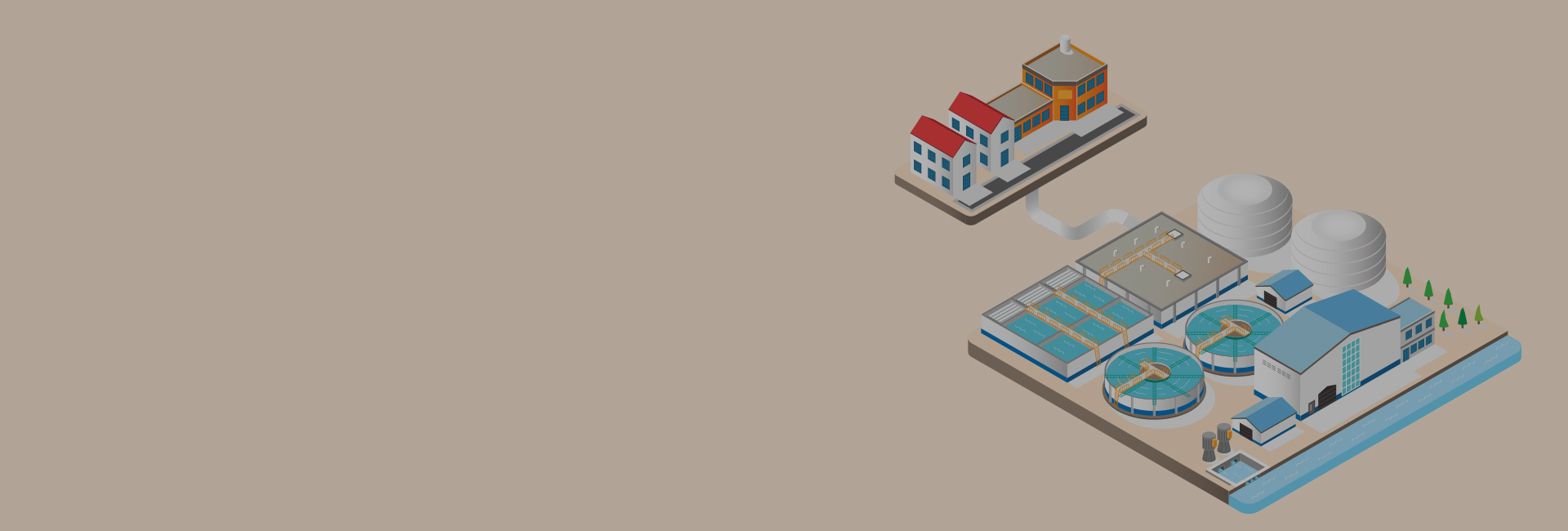
- Water, Nature and Humankind
- K-water Dictionary
-
Here are some Key words that
matter to K-water that’s committed to
offering the world’s top-class water
welfare- Written by. Choi Hang-jwa
- Source by. K-water
-
You may have heard of “water welfare”, but are not sure what it even means Do you wish to learn more about it, but don’t know who to ask?
Let’s delve deeper into some of K-water’s key words that are often mentioned in our many projects being carrying out to guarantee worry-free water worries for everyone.
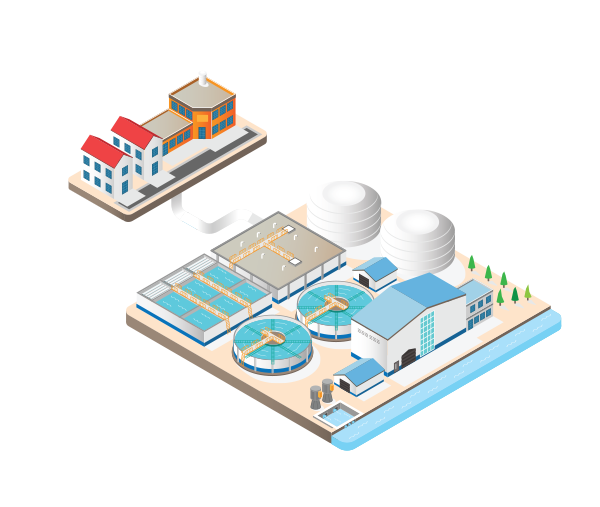
Decentralized Water Supply System
A decentralized water supply system is equipped with a customized water purification plant that is remotely controlled to supply clean water in a stable manner—without restrictions in water amount and quality—in mountainous areas and other regions where water supply is not stable due to geographic barriers, or in communities with small-scale water supply facilities that make it difficult to control water quality, and to ensure sufficient water supply. Most “centralized” water supply systems collect water from water sources like dams and rivers and distribute water to densely populated areas through water pipes after the water goes through the purification process at a large-scale water purification plant. In a decentralized water supply system, however, the construction and location of water purification plants and other water supply facilities can be adjusted befitting the needs of consumers according to the geographic features and water demand of the target area.
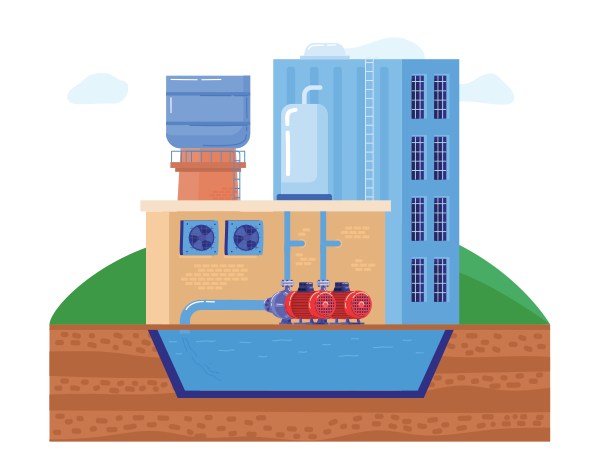
Groundwater Reservoir
A groundwater reservoir is an environment-friendly facility to secure water resources by installing artificial barrier walls in the aquifer, an underground layer where groundwater flows, and collecting and storing groundwater in it. Groundwater reservoirs can help provide high-quality groundwater to areas suffering from water shortages. K-water made a groundwater reservoir in Daeyijak-do, Ongjin-gun County in Incheon Metropolitan City—which was subject to chronic water shortages—in December 2020. It was the first groundwater reservoir ever built on an island in Korea.
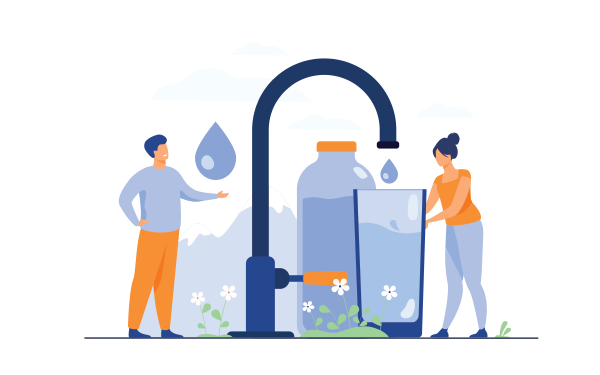
‘National Water Welfare Index’
As a result of years of research, K-water has developed the “national water welfare index” to realize water welfare for all citizens, based on objective data. There are three major assessment categories identified based on the OECD environmental performance review standards: equality, stability, and healthiness. Under the three categories, 18 indicators and 30 assessment factors were created. The index is used to assess quantitatively the water welfare levels of local governments and suggest customized alternatives for regions in urgent need of improving water welfare. It also serves as a tool for determining the priorities in designing and implementing water-related policies.
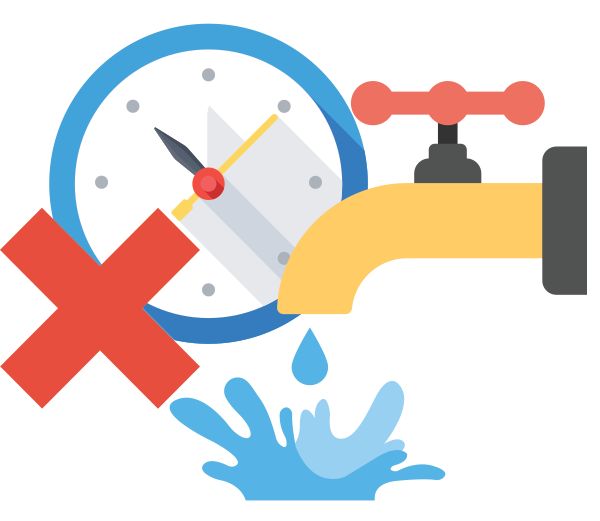
Abolishment of Restricted Water Supply Scheme
In the restricted water supply scheme, water supply is available only during specified hours of the day. For example, some parts of Namhae County in Gyeongsangnam-do Province were subject to restricted water supply. Since the water supply system was first introduced in 1975 in the county, water supply had been restricted for 7 hours from 10 pm to 5 am, causing inconvenience to the residents. In order to address this problem, K-water and the Namhae County government signed a water pipe modernization agreement. Under the agreement, K-water abolished the water supply restrictions in phases starting September 2019, and water supply services became available 24/7 across the entire county in July 2020. As a result, the overall water supply services and quality of life have markedly improved in the county.
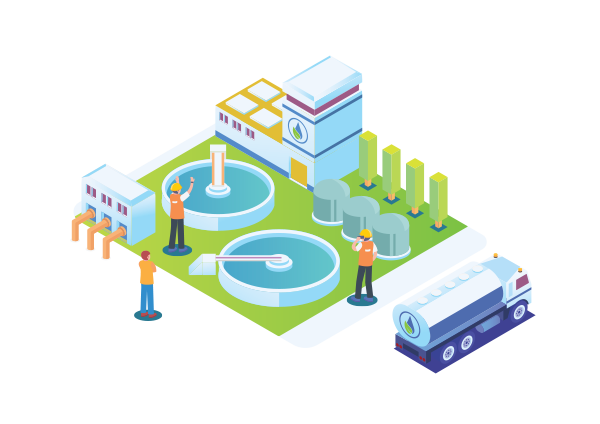
Operation of Waterworks Assistance Centers
Waterworks Assistance Centers were established to manage local water supply facilities better and cope with tap water accidents in a more organized, professional manner. There are four centers in the country, one located at each of the four major rivers: Han, Nakdong, Yeongsan, and Seomjin. K-water is operating all of these four centers on behalf of the central government.
The center performs three main jobs. First, it helps respond to crises by offering customized support to local governments in handling and preventing accidents involving local waterworks. Second, it monitors the national water supply data in real time to prevent accidents and secure what is called the “golden time” in case of an accident. Third, it provides technical support including consulting on water flow rates to enhance the quality of water supply services in such a way that citizens can actually feel the benefits. As part of its daily responsibilities, the center monitors the water data of local governments in real time via the integrated control center to prevent accidents and minimize damage.

